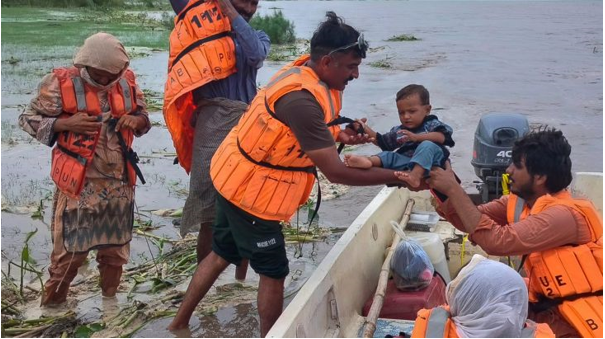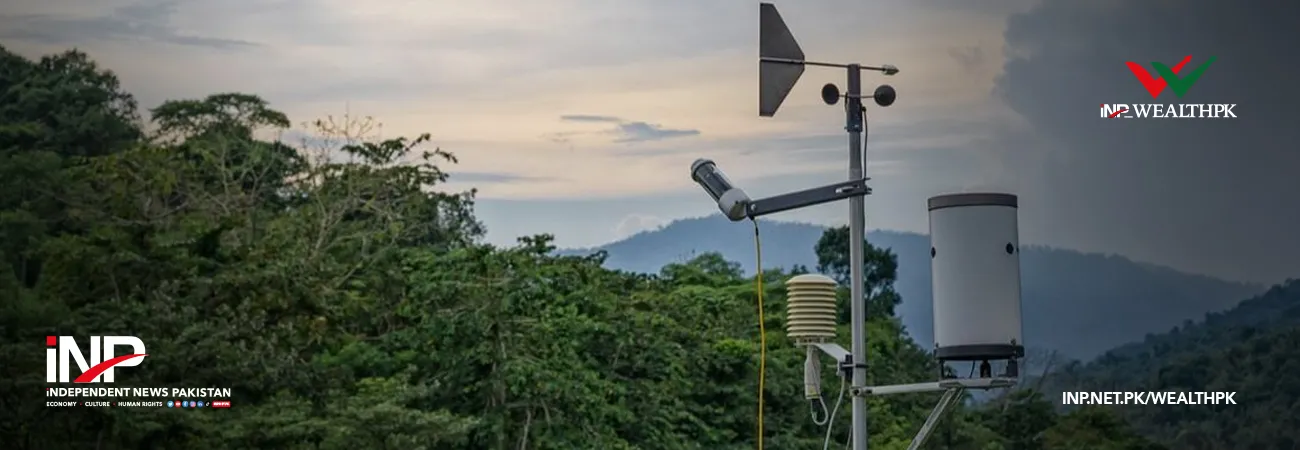INP-WealthPk
Ayesha Saba
Pakistan’s nationwide flood-relief campaign has rescued more than three million people, established 949 relief camps, and mobilized thousands of personnel from civil and military institutions in one of the largest humanitarian responses in the country’s history, according to the government’s Preliminary Assessment of Flood Damages Report.

The Ministry of Planning, Development and Special Initiatives, citing data from the National Disaster Management Authority (NDMA) and provincial governments, said that as of September 30, 2025, a total of 5,769 rescue operations had been conducted across the country, saving stranded families, livestock, and essential goods from floodwaters. “Pakistan’s coordinated response has been unprecedented in scale,” the report noted.
“The combined efforts of the armed forces, NDMA, provincial administrations, and civil society have prevented further loss of life and supported early relief in the worst-affected districts.” The floods displaced more than four million people, destroyed 229,763 houses, and caused estimated economic losses exceeding Rs822 billion, making rapid rescue and relief the federal government’s foremost priority. According to the report, the armed forces were deployed across all provinces to conduct emergency evacuations, deliver food, and repair critical infrastructure.
Air assets were particularly vital in Khyber Pakhtunkhwa, Punjab, and Balochistan, where entire settlements were cut off by collapsed bridges and submerged roads. “Deployment of helicopters, boats, and engineering units allowed the evacuation of families from inaccessible areas,” the report said. “The armed forces established numerous relief and medical camps, distributed rations and safe drinking water, and provided tents for temporary shelter.”
The NDMA and provincial disaster agencies set up nearly a thousand relief camps across 70 affected districts. These centers housed displaced families and served as coordination hubs for health, sanitation, and nutrition services. The report said more than 662,000 people received medical treatment in temporary camps supported by military doctors, civil administration, and humanitarian partners. Essential supplies distributed nationwide included tents, ration packs, blankets, mosquito nets, hygiene kits, and emergency medicines.
Non-governmental organizations, volunteers, and private philanthropists played a parallel role, complementing state efforts with locally tailored relief programs. The Pakistan Red Crescent Society, various faith-based charities, and business groups distributed cooked meals, clean water, and sanitation materials in areas where formal infrastructure remained disrupted. “The partnership between civil society and the armed forces allowed the national response to reach remote pockets that would otherwise have remained inaccessible,” the Planning Ministry observed.
The government highlighted that despite the enormous scale of need, Pakistan initially chose to rely on domestic resources and internal mobilization rather than issuing an immediate international appeal. However, several international organizations and donor agencies have began providing targeted support, particularly for health and logistics.
Experts cited in the report said the coordinated response demonstrated the growing maturity of Pakistan’s disaster-management system since the creation of the NDMA in 2007. “This operation has shown that Pakistan can mobilize rapidly when institutions work together,” one analyst noted. “However, sustained recovery requires long-term financing and planning.”
The document called for a seamless transition from rescue to reconstruction, urging that “short-term humanitarian assistance must evolve into durable recovery.” It recommended that rehabilitation planning include livelihood restoration, education continuity, and resilient infrastructure rebuilding.
The ministry emphasized the need to institutionalize civil–military coordination under a formal National Disaster Response Framework, ensuring that future emergencies can be met with similar speed and scale. It also proposed developing permanent logistics hubs in vulnerable provinces for faster deployment during crises.
“The 2025 floods tested every layer of Pakistan’s emergency apparatus,” the report concluded. “The collective response—anchored by the armed forces and supported by provincial and civil actors—proved that national resilience is possible through unity, coordination, and climate-informed preparedness.”
Credit: INP-WealthPk













